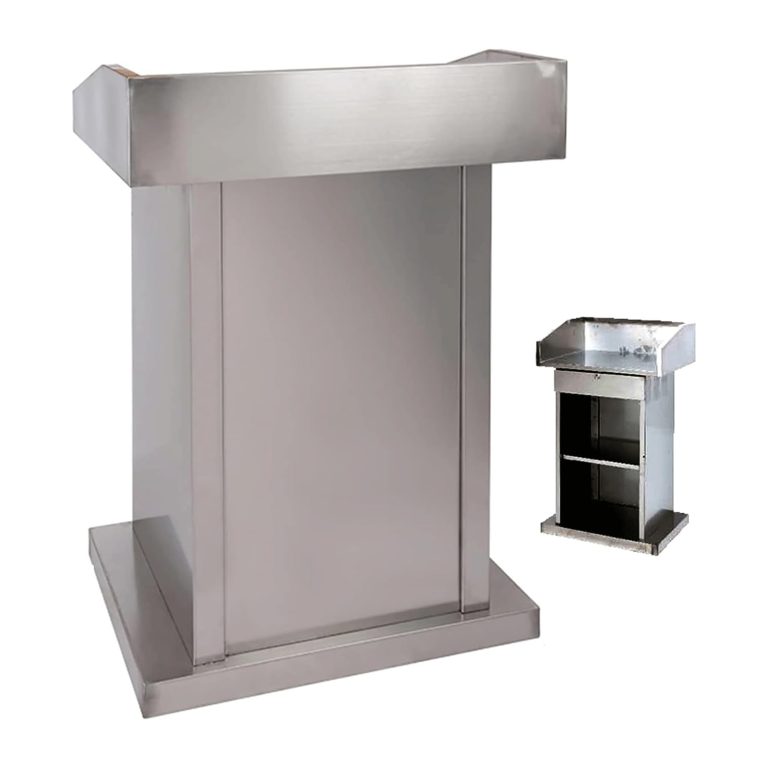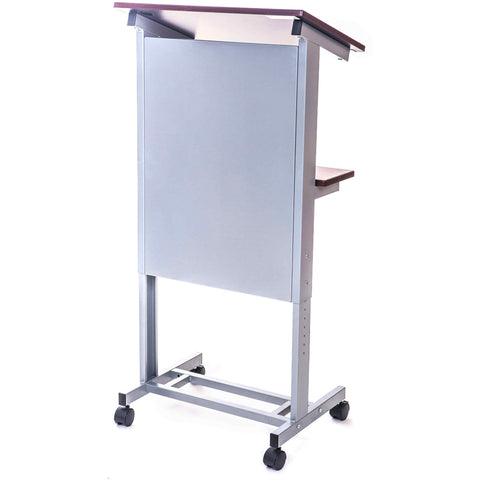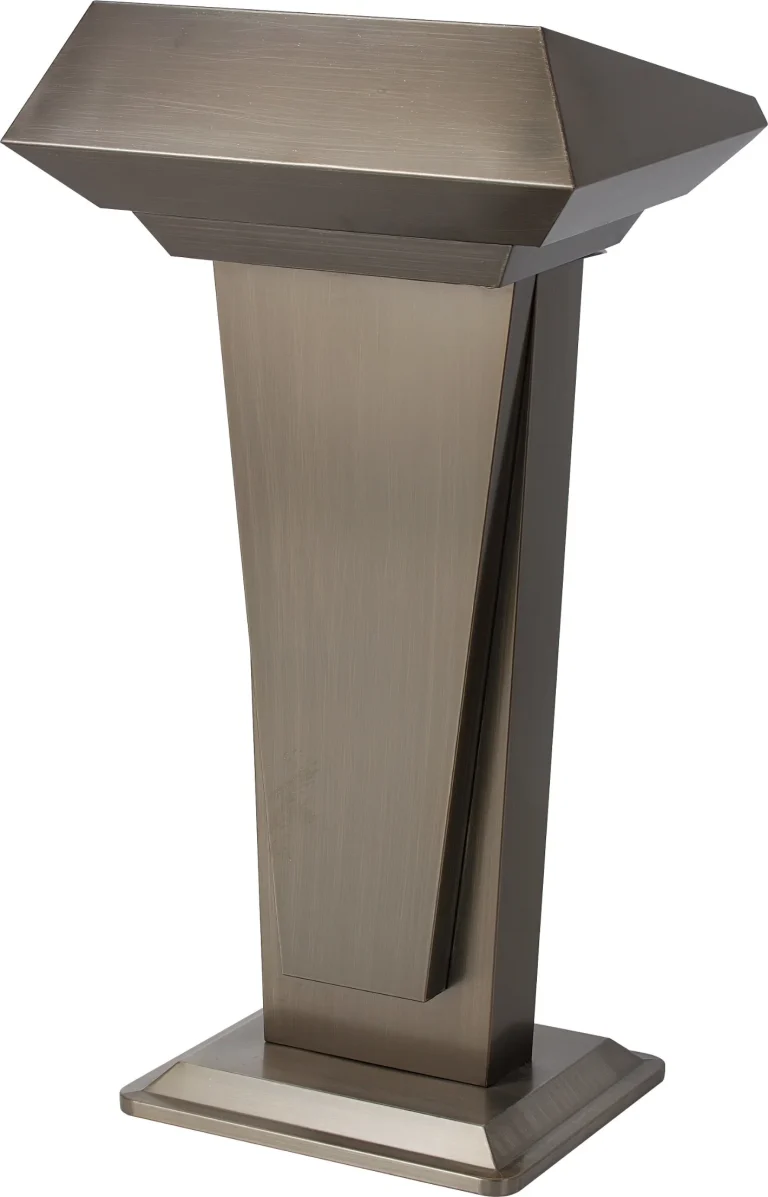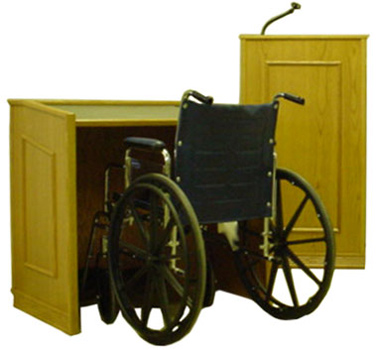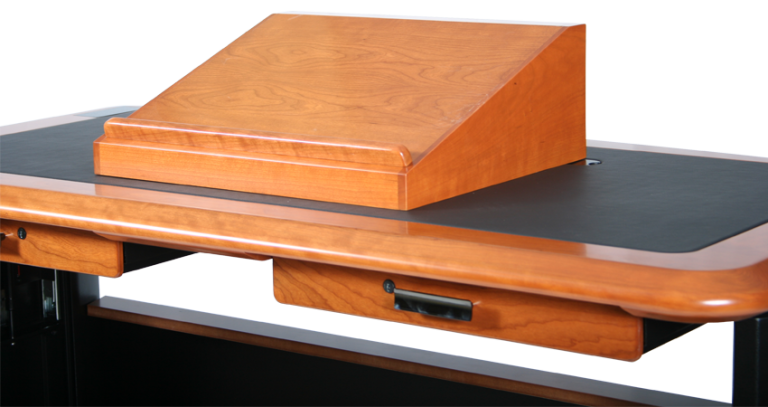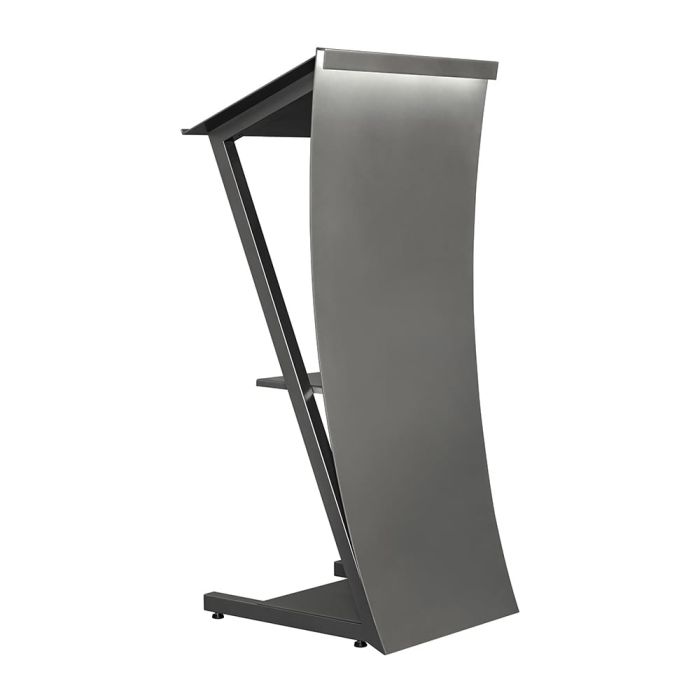Stagecraft Terms
Stagecraft terms refer to the specialized jargon used in the field of stage production, including lighting, sound, and set design. These terms are essential for effective communication and collaboration among stage technicians and artists.
Understanding these terms helps ensure a smooth and successful performance by facilitating clear instructions and technical implementation. Whether you are involved in theater, live concerts, or other stage events, familiarizing yourself with stagecraft terms is necessary for seamless execution of productions.
We will explore some common stagecraft terms and their meanings, providing a helpful reference for both beginners and experienced professionals in the industry.
Stage Directions
Welcome to our blog post on stagecraft terms! In this section, we will explore the world of stage directions – a fundamental aspect of theater production. Stage directions are instructions given to actors and production crew members that indicate specific actions, movements, or placements on the stage. These directions are crucial for the smooth execution of a play or performance, as they help create a cohesive and impactful theatrical experience.
Definition And Purpose
Definition: Stage directions are written instructions provided in the script of a play or performance, guiding actors and production crew members on various actions, movements, and placements on the stage. These instructions ensure consistency and clarity in the portrayal of a scene, creating a unified vision for the production.
Purpose: The purpose of stage directions is to communicate specific physical aspects of a performance to the actors and production team. They provide essential information about where and how actors should move, interact, and position themselves on stage. By following these directions, the performers can bring the script to life and enhance the overall storytelling.
Common Stage Directions
Stage directions consist of numerous commands and indications that contribute to the seamless execution of a play. Let’s explore some of the most common stage directions:
- Enter: This direction signals the entrance of a character onto the stage.
- Exit: Opposite to “Enter,” this direction signifies the departure of a character from the stage.
- Stage Left/Right: These directions refer to the left or right side of the stage from the actor’s perspective.
- Center Stage: This direction indicates the central area of the stage, typically used for vital scenes or significant character moments.
- Downstage/Upstage: “Downstage” refers to the area closest to the audience, while “Upstage” signifies the area farthest from the audience.
- Cross: When an actor moves from one part of the stage to another during a scene, it is referred to as a cross.
- Stage Business: This direction refers to any additional actions or activities that accompany the main dialogue or scenes.
- Pause: A pause indicates a brief pause in the action or dialogue, often used for dramatic effect.
- Gesture: Gesture commands instruct actors to perform specific hand movements or body language to enhance their character portrayal.
These are just a few examples of the many stage directions used in theater productions. By following these instructions, actors, directors, and production crews can work together harmoniously to create a compelling and captivating performance.

Credit: m.youtube.com
Lighting Terms
Understanding the various lighting terms used in stagecraft is essential for creating a visually captivating performance. From setting the mood to highlighting the actors and props, lighting plays a vital role in bringing a production to life. In this section, we will delve into different lighting terms, including the types of stage lighting and the equipment used.
Types Of Stage Lighting
Stage lighting encompasses a range of techniques designed to enhance the theatrical experience. Here are some of the most common types of stage lighting:
- Frontlighting: Illuminating the actors and stage from the front, emphasizing facial expressions and capturing attention.
- Backlighting: Lighting positioned behind the actors or props to create silhouettes and add depth to the scene.
- Sidelighting: Placing lights at the sides of the stage to define shapes and accents, adding dimension.
- Toplighting: Lighting from above, often used in conjunction with other types to provide an overall wash of light or simulate natural lighting.
- Spotlighting: Focusing a bright beam on a specific area or actor to draw attention and create a focal point.
Lighting Equipment
To achieve these different lighting effects, stage productions rely on a variety of specialized lighting equipment. Some commonly used lighting equipment includes:
| Equipment | Description |
|---|---|
| Fresnel Spotlights | Compact lights with adjustable lenses that provide a soft-edged beam and are often used for general washes of light. |
| PAR Cans | Short for “parabolic aluminized reflector,” these lights have a parabolic-shaped reflector that produces a powerful, focused beam. |
| Intelligent Lighting | Automated lights that can be programmed to move, change colors, and create various effects, offering versatility and control. |
| Gobos | Thin metal or glass plates with cut-out patterns that can be placed in front of a light source to cast intricate shadows or images. |
There are many more lighting tools and equipment available, each serving a specific purpose in enhancing the visual impact of a stage production. Familiarizing yourself with these lighting terms and equipment can help you better understand the immersive world of stagecraft.
Sound Terms
In the world of stagecraft, sound plays a crucial role in creating a captivating experience. Understanding sound terms is essential for both technicians and performers to ensure seamless performances and productions. In this section, we will explore some important sound terms, including sound effects and audio equipment.
Sound effects are used to enhance the auditory experience of a performance or production. They can be created and manipulated in various ways to create specific sounds and atmospheres that complement the overall narrative. Here are a few common sound effects you might encounter:
- Foley: Foley is the reproduction of sound effects using various objects and materials. These include footsteps, door slams, and other everyday noises that add realism to a scene.
- Ambient: Ambient sound effects are used to create a background atmosphere. They can be anything from the sound of traffic on a busy street to the chirping of birds in a forest.
- Special effects: Special effects are unique sounds used to create specific moments or actions in a performance. These can range from explosions and laser blasts to magical spells and creature noises.
High-quality audio equipment is essential for delivering clear and immersive sound to an audience. The right equipment ensures that all sound elements are heard with precision and clarity. Here are some common types of audio equipment used in stagecraft:
| Equipment | Description |
|---|---|
| Microphones | Used to capture and amplify sound from performers and instruments. |
| Speakers | Produce sound and deliver it to the audience. |
| Soundboard/Mixer | Controls and adjusts the levels of sound inputs and outputs. |
| Amplifiers | Increase the power of the audio signal to drive speakers. |
By understanding sound effects and audio equipment, you can contribute to the immersive experience of a stage production. Whether you’re creating realistic sounds or ensuring crystal-clear audio delivery, sound terms are essential for stagecraft success.
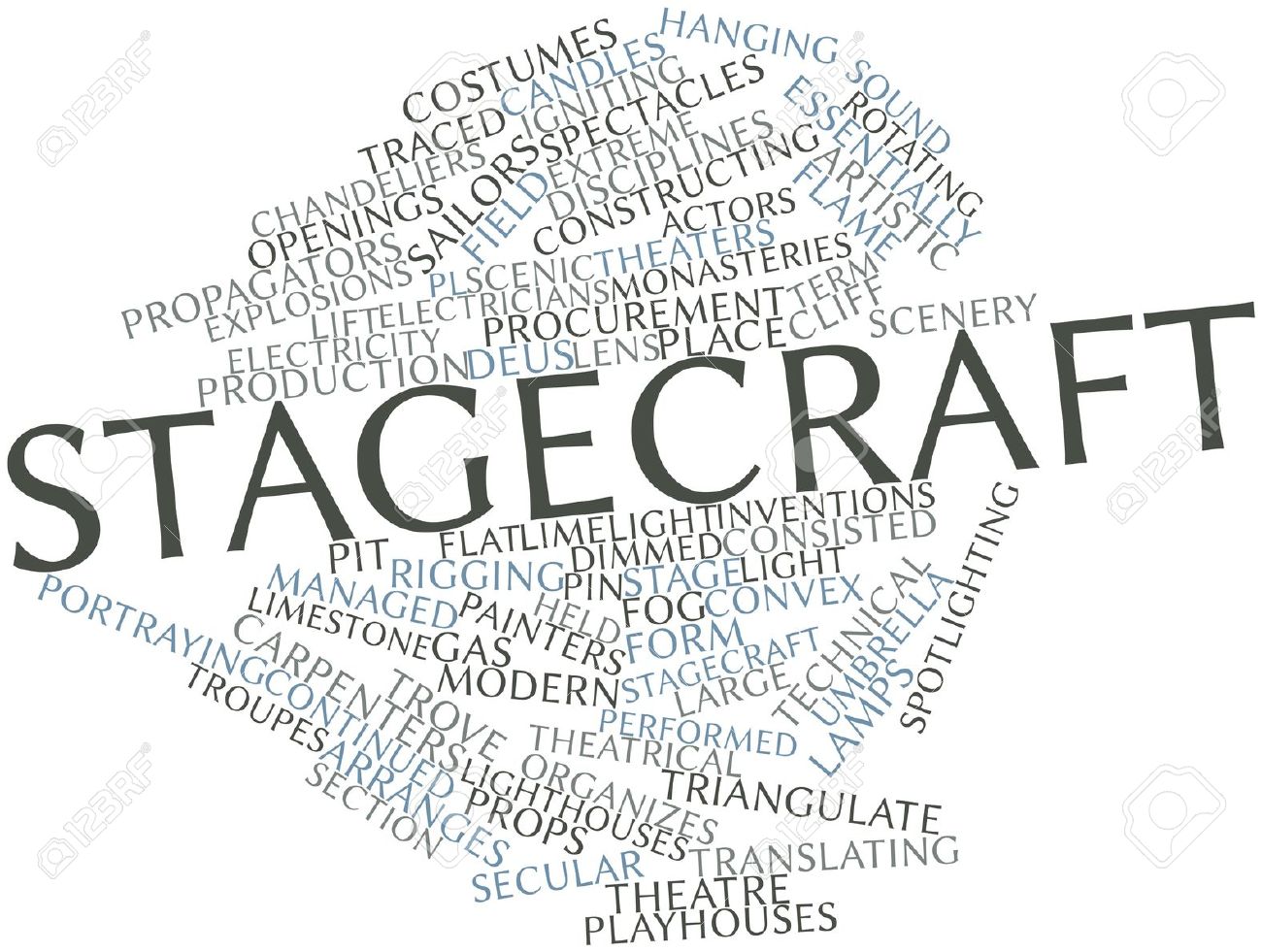
Credit: trumbullnewtheatre.com
Set Design Terms
Set design is an integral part of creating a captivating and immersive theatrical experience. It involves the careful planning and execution of various elements to bring the stage to life. In this section, we will explore two important set design terms: props and set dressing, as well as stage layout.
Props And Set Dressing
Props and set dressing play a crucial role in enhancing the authenticity and visual appeal of a stage production. Props are objects or items used by the actors during a performance, while set dressing refers to the decorative elements that adorn the stage. Let’s take a closer look at each:
Props
Props serve various purposes in a production. They can be used to provide context, enhance characterization, or facilitate action. Examples of props include weapons, tools, books, or any object that is handled or interacted with by the actors. Props are carefully chosen to align with the time period, setting, and overall tone of the play. They are essential in creating a believable and immersive stage environment.
Here are some key aspects of props:
- Props are selected and managed by a designated prop master, who ensures their availability, function, and safety during the performance.
- Props may be classified as hand props (small items held by actors), set props (larger elements placed on the set), or consumable props (items used up or destroyed during the show).
- Props can be either realistic (resembling real-life objects) or symbolic (representing abstract concepts).
Set Dressing
Set dressing refers to the decorative elements that are used to enhance the aesthetics and atmosphere of the stage. It includes items such as furniture, artworks, curtains, plants, or any other object that contributes to the visual composition of the set. Set dressing helps create a sense of time, place, and mood, allowing the audience to fully immerse themselves in the world of the play.
Here are some key aspects of set dressing:
- Set dressing is carefully selected and arranged by the set designer, who coordinates with the director and production team to ensure a cohesive visual narrative.
- The choice of set dressing elements is influenced by factors such as the play’s time period, setting, characters, and directorial vision.
- Set dressing can be used to convey the social status of characters, evoke specific emotions, or support the overall theme of the production.
Stage Layout
The stage layout refers to the arrangement and configuration of the physical space where the performance takes place. It encompasses the placement of set pieces, furniture, props, and actors on the stage. A well-thought-out stage layout can facilitate smooth scene transitions, highlight key moments, and optimize visibility for the audience.
Here are some factors to consider when designing the stage layout:
- Proximity and relationship between set elements and actors: Placement of objects and actors should support the narrative and ensure clear sightlines for the audience.
- Practicality and functionality: The layout should allow for seamless movement of actors and props on and off the stage.
- Aesthetic composition: The arrangement of set pieces should create visually appealing and balanced compositions that enhance the overall storytelling.

Credit: m.youtube.com
Frequently Asked Questions For Stagecraft Terms
What Are The 5 Parts Of Stagecraft?
The five parts of stagecraft are set design, lighting, sound, props, and costumes. Set design creates the physical space, while lighting and sound enhance the atmosphere. Props and costumes add authenticity and help bring the production to life.
What Is Stagecraft In Simple Words?
Stagecraft is the art of creating and organizing everything you see on a stage during a performance. It includes lighting, sets, props, costumes, and sound, all working together to enhance the storytelling and bring the production to life.
What Are Stagecraft Facts?
Stagecraft facts refer to the essential knowledge and techniques used in theater productions. These encompass lighting, sound, set design, props, costumes, and staging. Stagecraft plays a crucial role in creating immersive and visually appealing theatrical experiences for the audience. It includes various elements that enhance the overall production quality.
What Is Stagecraft Skills?
Stagecraft skills refer to the abilities and techniques used in managing and creating a theatrical production. This includes knowledge of set design, lighting, sound, costumes, props, and stage management. It is vital for creating a visually stunning and immersive experience for the audience.
What Is The Purpose Of Stagecraft Terms?
Stagecraft terms are used to describe various elements and techniques in theater productions, helping to create an immersive and visually captivating experience for the audience.
Conclusion
To wrap up, understanding common stagecraft terms is essential for anyone involved in the theater industry. Whether you’re an actor, director, or lighting technician, knowledge of terms like blocking, cue, and prop can greatly improve communication and collaboration. By familiarizing yourself with these concepts, you can navigate rehearsals and performances more effectively.
So, don’t forget to broaden your stagecraft vocabulary and enhance your overall theater experience.
